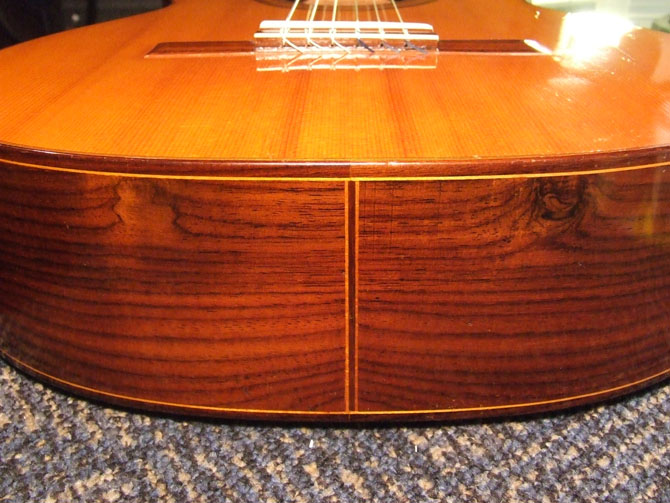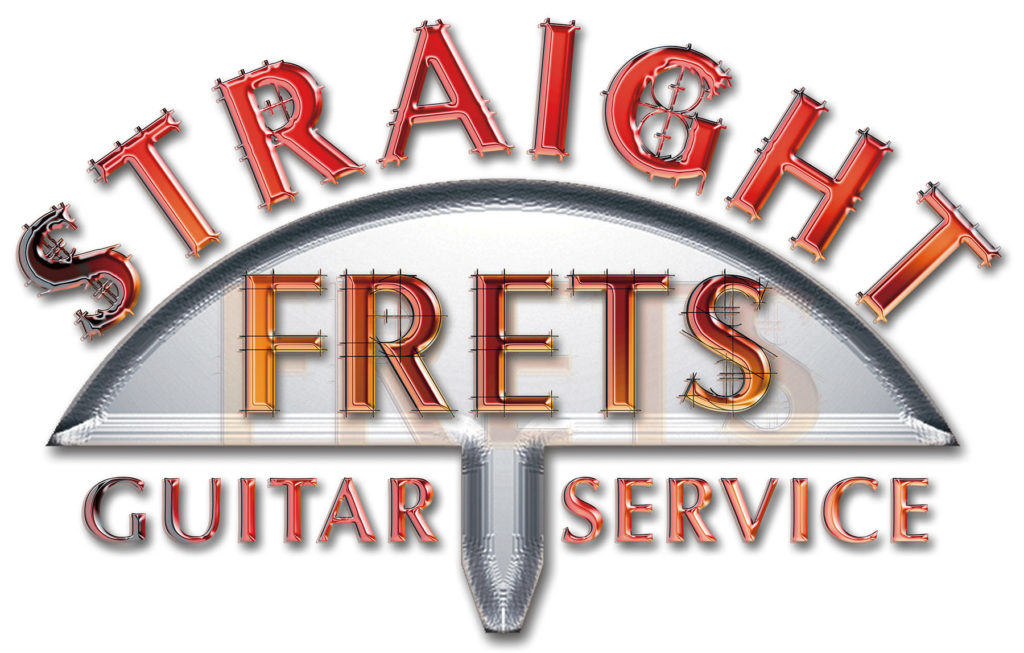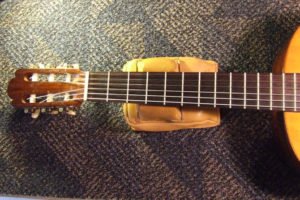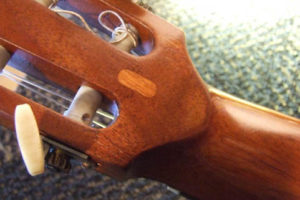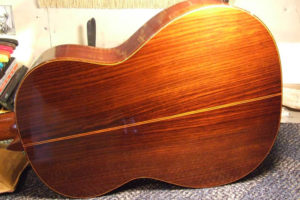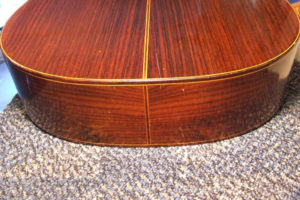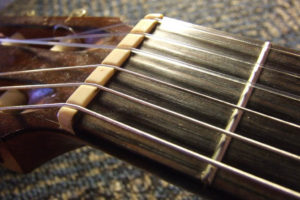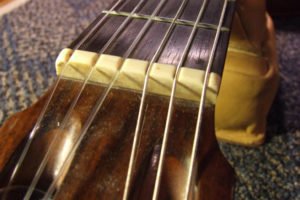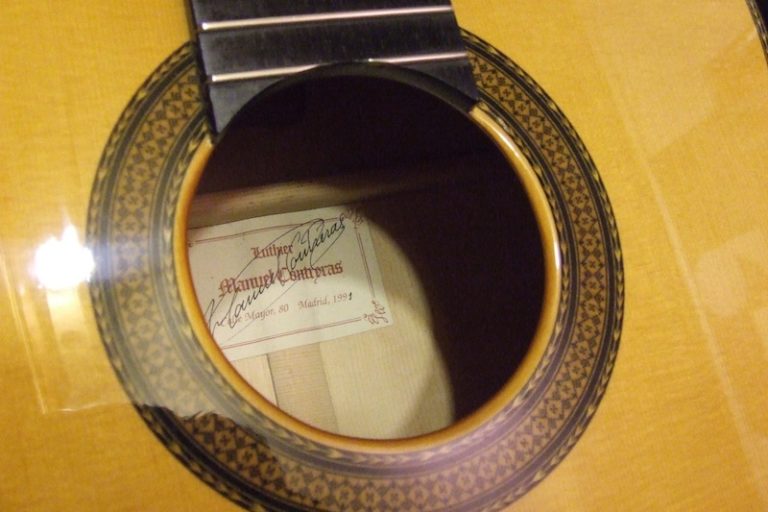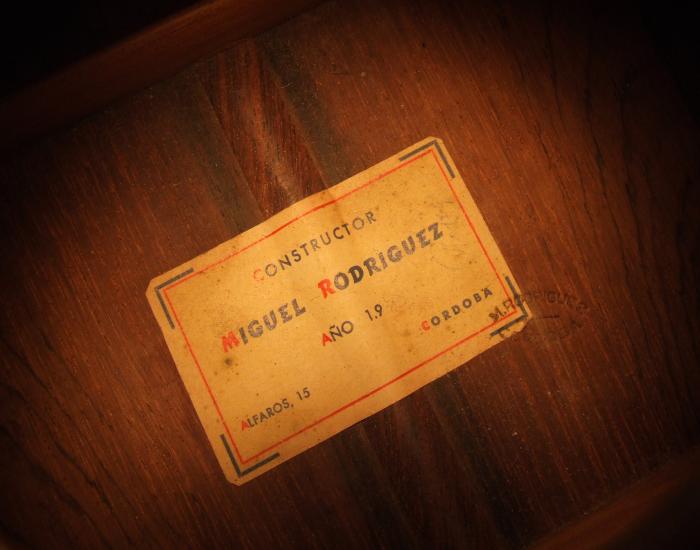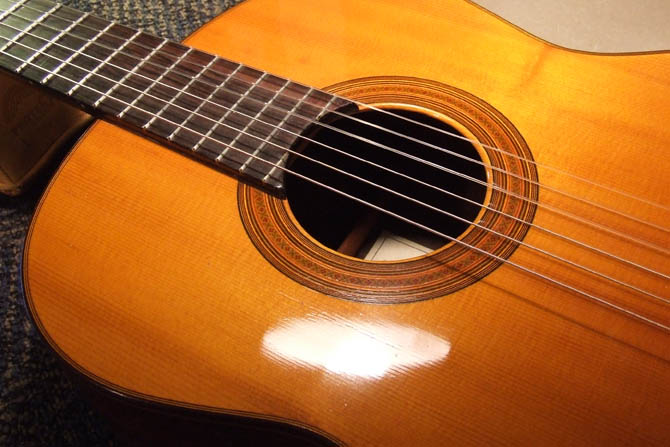
This guitar was built in 1965 by Japan’s preeminent luthier, Masaru Kono.
According to the additional label, it was made for a friend of his, making this the original Japanese non-export model.
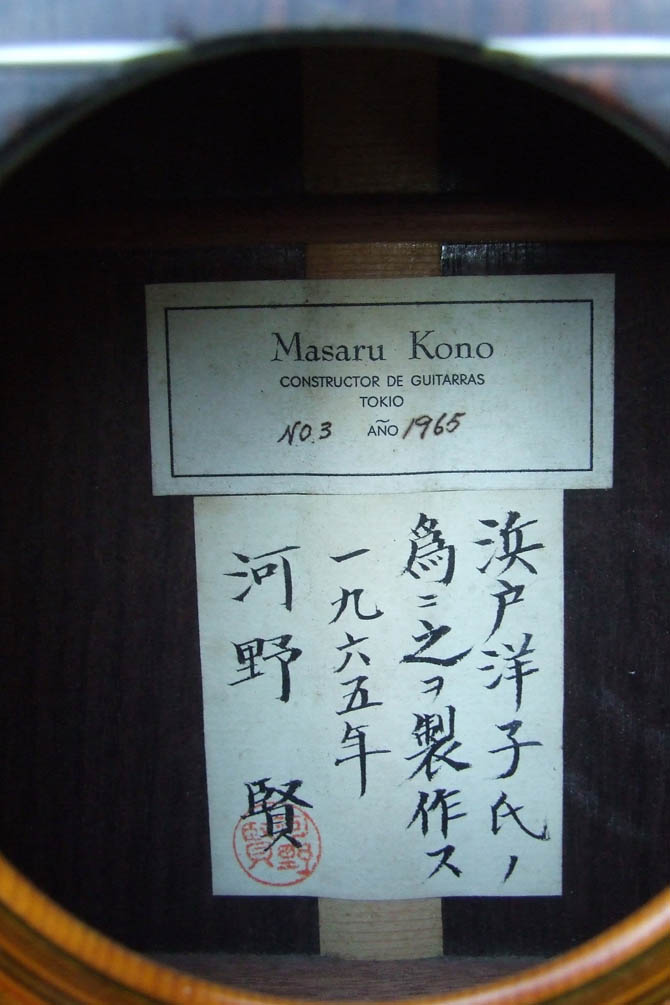
Here’s the other issue regarding clarity of this instrument: the saddle is too flat on the top, which allows the string to roll around from side to side when played with a medium to heavy attack. This allows the note to sound with a slight amount of distortion, almost as if there’s an internal brace slightly loose.
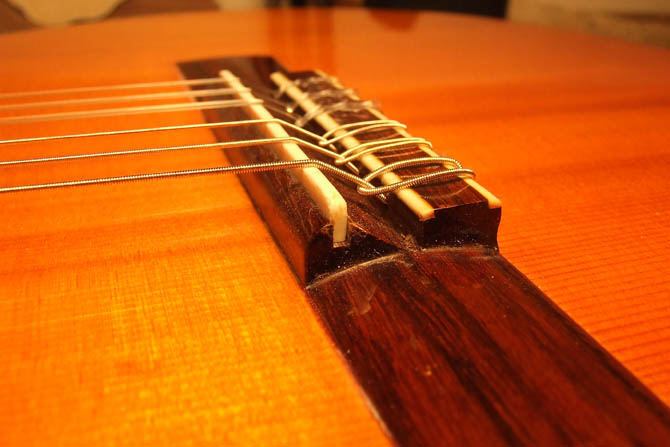
This is obviously not the original saddle. Kono always had material that fit his own instruments perfectly.
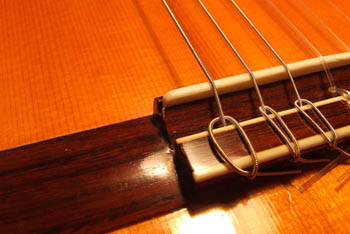
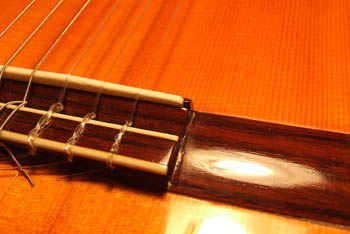
After a difficult removal of the saddle, my calipers indicate a slightly crooked slot:
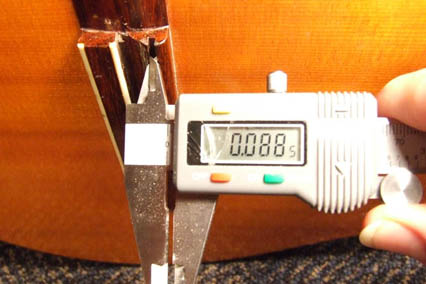
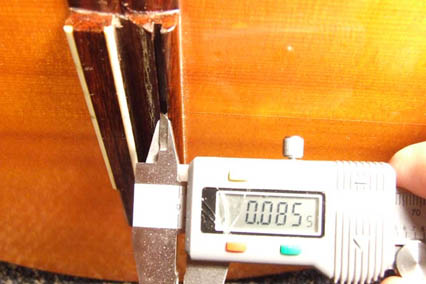
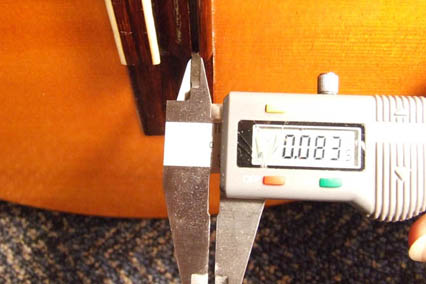
No problem- I’ll just make a saddle to these specs to insure maximum contact with the bridge.
Here’s the old nut and saddle next to the new rough cut ivory and iboney (ivory treated bone). This material isn’t as bright as bone or as warm as ivory, it’s somewhere in between which is just what this guitar needed.
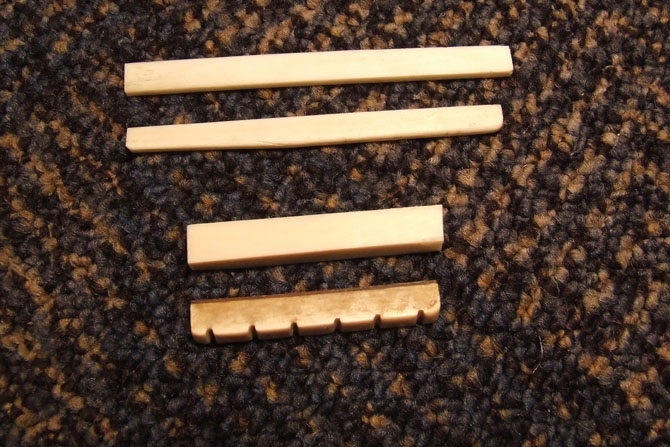
The rosewood handled micro chisel and Stew-Mac nut seating file insures a nice clean, square slot for the ivory to sit in. This transmits vibrations much better than the older shimmed nut.
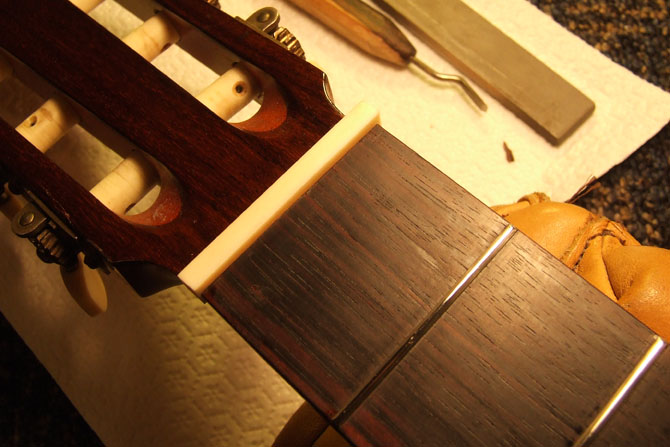
Here’s the fingerboard in transformation. This thing hadn’t been oiled properly in a while.
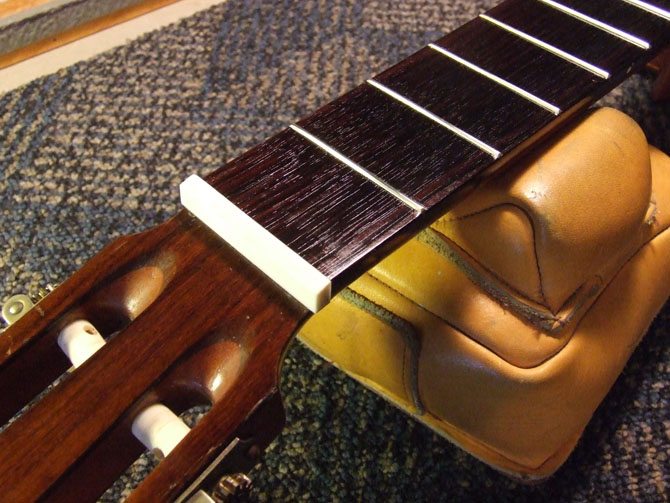
After carefully removing material to match the crooked slot, this saddle fits snug on all sides and is ready for strings for final height and intonation adjustments.
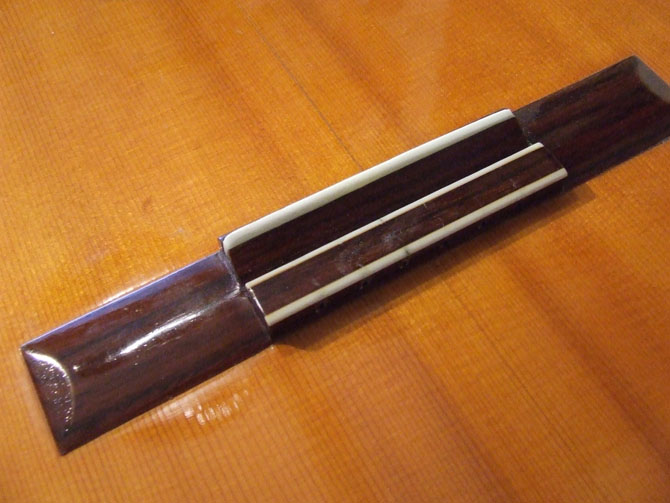
After the strings are tuned to pitch and the guitar (and strings) settle, final adjustments are made to each string while the others remain at concert pitch.
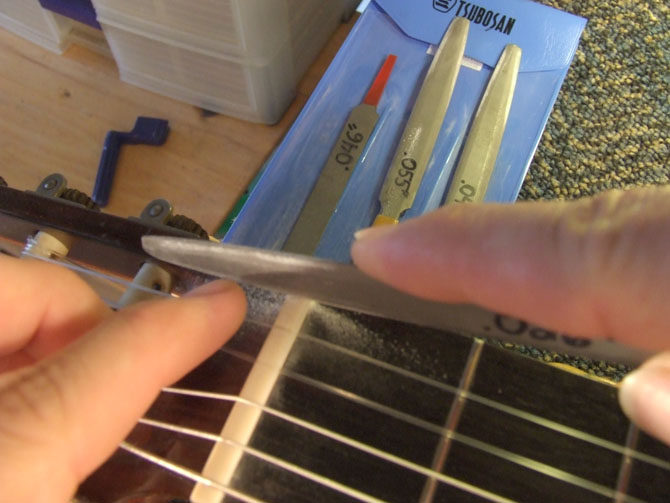
Here’s a couple of shots of the almost finished product:
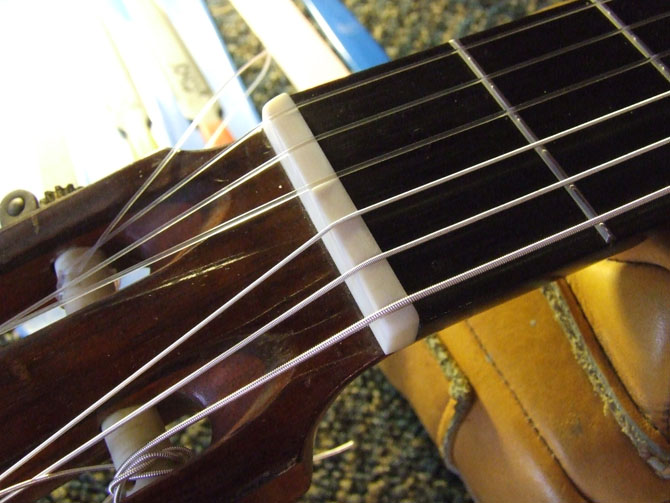
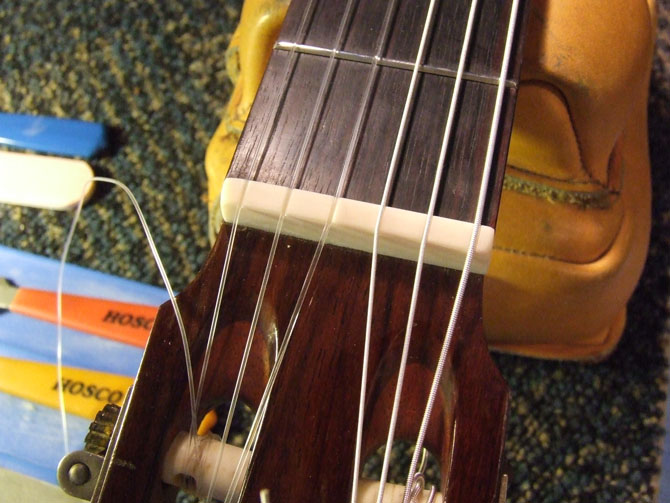
The saddle is compensated to allow for beautiful singing overtones and sustain. This process takes a little while, but well worth it, especially on a guitar of this caliber.
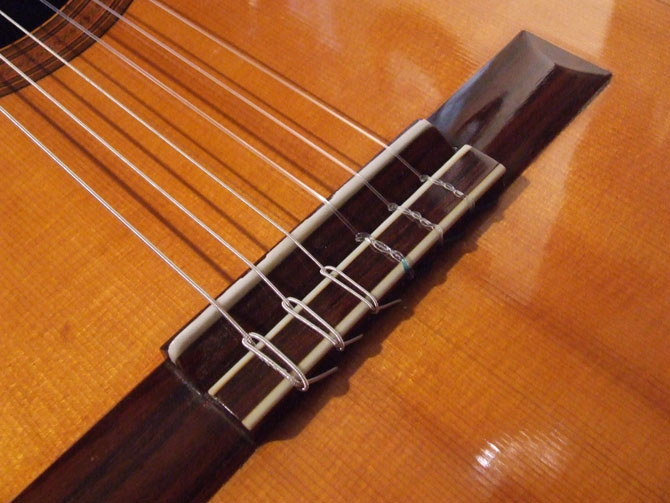
Here are those spots which had the excessive polishing compound. Overall, this guitar went from sounding a bit dead, to having a distinctive character which -according to the owner- now sounded like an old Fleta. Intonation, action, sustain, all improved. Total bill for this (early 2010) repair was $200 ( $100 ivory nut, $70 iboney saddle, $30 fret polishing/fretboard conditioning).
